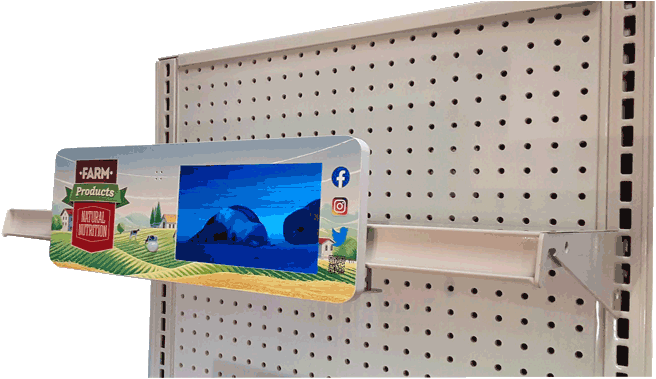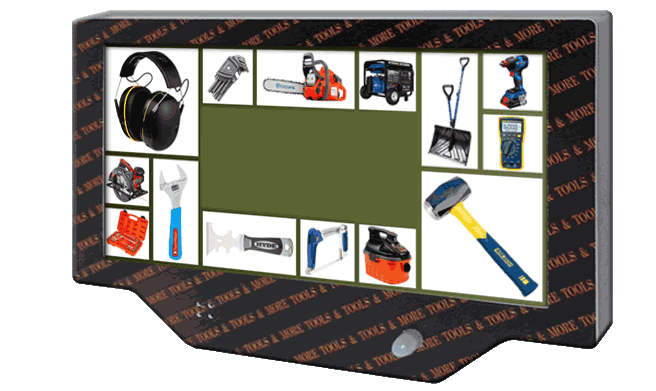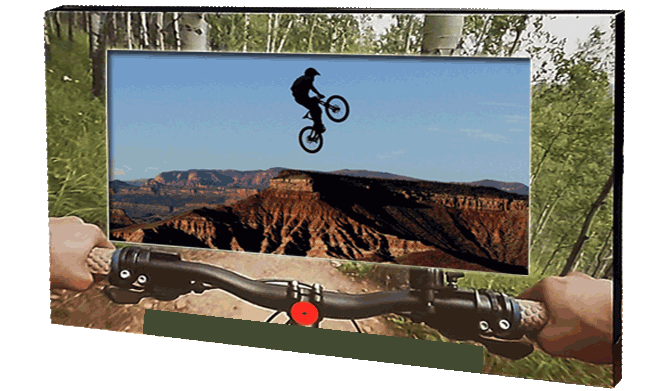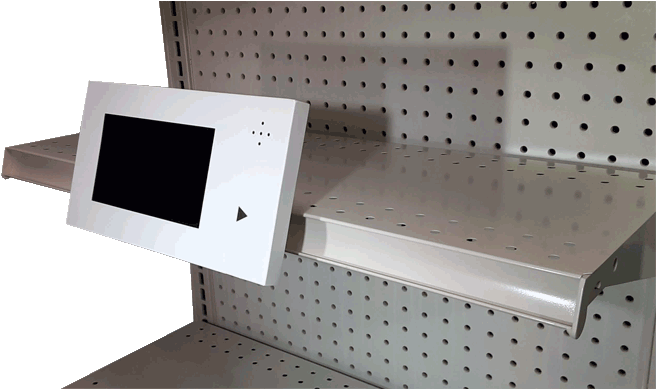Promotional Displays: An In-Depth Guide
Point of Purchase Display: The Ultimate Guide
Point of Purchase Display: The Ultimate Guide
Exploring the World of Point of Purchase Displays
In the cut-throat world of retail, grasping customers' attention is critical for success. Point of purchase (POP) displays are powerful marketing tools strategically positioned in stores to captivate interest, promote various products, and boost overall sales. In this comprehensive guide, we will delve into the importance of POP displays, discuss the wide array of types available, and outline essential factors to consider when designing these attention-grabbing promotional tools.
The Crucial Role of Point of Purchase Displays in Retail
POP displays play an indispensable role in the retail industry for a variety of reasons. Firstly, they contribute to creating an engaging in-store experience for customers, increasing the likelihood of making a purchase. Secondly, they emphasize promotional offers or newly launched products, making it easy for customers to identify and locate these items. Lastly, they can be custom-tailored to fit a brand's aesthetic, reinforcing brand recognition and nurturing customer loyalty.
A Closer Look at the Various Point of Purchase Display Options
There is a diverse range of POP displays, each offering its unique characteristics and advantages. Let's examine some of the most popular types.
Counter Displays: Small yet Impactful
Counter displays are compact promotional tools positioned near the checkout area. Their primary purpose is to capture customers' attention while they wait in line, encouraging last-minute impulse purchases. Typical items featured in counter displays include small confectionery products, novelty items, and travel-sized accessories.
Floor Displays: Striking and Versatile
Floor displays are larger, freestanding units placed in high-traffic areas of the store. They serve as excellent tools for showcasing seasonal items, new product launches, or limited-time offers. Floor displays can be constructed from a variety of materials, such as cardboard, plastic, or metal, depending on the desired durability and appearance.
End Cap Displays: A Perfect Opportunity to Impress
End cap displays are situated at the end of store aisles, ensuring high visibility to passing customers. These displays present an excellent opportunity to showcase promotional items, top-selling products, or newly introduced merchandise. Retailers frequently use end cap displays as an incentive for customers to explore the entire aisle.
Pallet Displays: Robust and Practical Solutions for Bulky Items
Pallet displays are large, sturdy structures specifically designed to hold and showcase heavy or sizable items. They are often utilized in warehouse-style stores or for promoting bulk items. Pallet displays provide an effective way to present products that would otherwise be challenging to display, such as massive bags of pet food or wholesale cleaning supplies.
Interactive Displays: A Memorable Customer Experience
Interactive displays captivate customers by allowing them to touch, feel, or interact with the product. These displays can feature touchscreens, product samples, or even virtual reality experiences. Interactive displays serve as an excellent method for creating a lasting impression and encouraging customers to spend more time with the product.
Key Considerations for Crafting Effective Point of Purchase Displays
To develop a successful POP display, several factors must be taken into account.
Visibility and Branding: Standing Out and Making a Lasting Impression
Visibility is a critical factor when designing a POP display. Ensure the display is situated in a high-traffic area and is easily noticeable by customers. Additionally, integrate your brand's colors, logo, and other visual elements to reinforce brand recognition and make the display stand out from the competition.
Engaging Messaging and Compelling Call-to-Action: Persuade and Motivate
The messaging on your POP display should be clear, concise, and engaging. Utilize persuasive language that encourages customers to take action, whether it's trying a new product or capitalizing on a promotional offer. Including a robust call-to-action (CTA) is essential, as it guides customers toward the desired result and stimulates them to make a purchase.
Ease of Accessibility: Simplify the Customer Experience
Ensure that customers can effortlessly access the products featured in your POP display. This means taking into account factors like shelf height, product arrangement, and the display's overall design. If customers find it challenging to reach or interact with the products, they may be less inclined to make a purchase. Design your display in a way that encourages seamless interaction and facilitates quick decision-making.
Selecting Appropriate Materials: Balancing Function and Aesthetics
The materials used for your POP display should serve both functional and visual purposes. Assess the durability, weight, and appearance of various materials, and select one that best aligns with your brand's aesthetic and the display's intended use. Keep in mind that the chosen material should effectively support the product's weight and withstand the wear and tear of a retail environment.
Targeting the Ideal Audience: Tailor Your Approach
Understand your target audience and tailor your POP display accordingly. Consider the demographics, preferences, and behaviors of your ideal customer, and customize your messaging, visuals, and overall design to appeal to this specific group. By targeting the right audience, you can maximize the effectiveness of your POP display and drive better results.
Designing POP Displays for Sustainability: The Environmentally-Conscious Approach
As environmental concerns continue to gain prominence, many retailers are focusing on creating eco-friendly POP displays. Sustainable materials, such as recycled cardboard, biodegradable plastics, and reusable metal or wood, can be utilized to minimize the environmental impact of these displays. Designing POP displays with longevity and reusability in mind can help reduce waste, lower costs, and convey a positive brand image.
The Impact of Digital Integration on Point of Purchase Displays
Incorporating digital elements into POP displays can significantly enhance their effectiveness. Digital integration can include the use of digital screens showcasing promotional videos, QR codes directing customers to product information or special offers, and even augmented reality (AR) experiences that provide an immersive, interactive encounter. By blending traditional POP displays with cutting-edge digital technology, retailers can create memorable customer experiences and further amplify sales.
Measuring the Success of Point of Purchase Displays: Assess and Optimize
To ascertain the effectiveness of your POP display, monitor key performance indicators (KPIs), such as sales, customer engagement, and brand recognition. Analyzing this data can help you identify areas for improvement and optimize your future POP display strategies. Regularly evaluate your displays' performance and make adjustments as needed to ensure that they continue to drive desired outcomes.
The Influence of Point of Purchase Displays on Consumer Behavior
POP displays have a significant impact on consumer behavior, as they can stimulate unplanned purchases, increase product trial rates, and strengthen brand loyalty. By employing compelling visuals, persuasive messaging, and strategic positioning, POP displays can influence customers' decision-making processes and encourage them to engage with the products on display. Ultimately, an effective POP display can inspire consumers to make a purchase they may not have initially considered.
International Considerations: Adapting POP Displays for Global Audiences
For retailers operating in international markets, it's essential to adapt POP displays to suit the local culture, language, and preferences. This may involve translating messaging, adjusting visual elements, or even completely redesigning the display to resonate with a specific market. By tailoring POP displays for different regions, retailers can ensure that their promotions remain effective and relevant to diverse customer segments.
The Future of Point of Purchase Displays: Staying Ahead of the Curve
As the retail landscape continues to evolve, staying current with emerging trends and technologies is crucial for retailers. This includes adapting POP displays to incorporate innovative design elements, digital integration, and sustainable materials. By remaining adaptable and forward-thinking, retailers can maximize the potential of their POP displays and continue to thrive in an increasingly competitive environment.
In Conclusion: Harnessing the Power of Point of Purchase Displays
Point of purchase displays are invaluable tools for retailers, helping to attract customer attention, showcase products, and increase sales. By understanding the various types of POP displays, considering key design factors, and measuring your display's success, you can create a more engaging and effective in-store experience for your customers. In the ever-evolving world of retail, a well-executed POP display can provide a significant competitive advantage and contribute to long-term business growth.
Frequently Asked Questions
What is the primary goal of a point of purchase display?
The main objective of a POP display is to capture customers' attention, promote specific products or offers, and ultimately increase sales.
What types of products are suitable for point of purchase displays?
A broad range of products can be displayed in POP displays, including new or promotional items, impulse purchases, seasonal products, and best-selling items.
How can I ensure my POP display is effective?
To create an effective POP display, focus on factors such as visibility, engaging messaging, accessibility, appropriate use of materials, and targeting the right audience.
How do I measure the success of my point of purchase display?
Monitor key performance indicators (KPIs) like sales, customer engagement, and brand recognition to evaluate the success of your POP display and make improvements as needed.
Can POP displays be customized to fit my brand's aesthetic?
Yes, POP displays can be tailored to incorporate your brand's colors, logo, and other visual elements, reinforcing brand recognition and creating a cohesive shopping experience.
How can I incorporate digital elements into my POP display?
Digital elements, such as screens displaying promotional content, QR codes, or augmented reality experiences, can be integrated into POP displays to enhance customer engagement and create a memorable shopping experience.
What materials can be used for eco-friendly POP displays?
Sustainable materials for eco-friendly POP displays include recycled cardboard, biodegradable plastics, and reusable metal or wood components.
How do POP displays influence consumer behavior?
POP displays can impact consumer behavior by encouraging impulse purchases, increasing product trial rates, and fostering brand loyalty through captivating visuals, persuasive messaging, and strategic positioning.
How can I adapt my POP display for international markets?
Adapting POP displays for international markets may involve translating messaging, adjusting visual elements, or redesigning the display to resonate with the local culture, language, and preferences.
What are some emerging trends in POP display design?
Emerging trends in POP display design include the incorporation of digital technology, the use of sustainable materials, and the adaptation of displays for international audiences.



